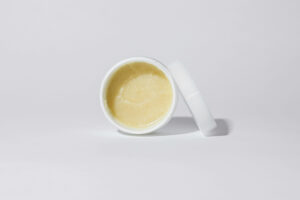The Conscious Beauty Workshop

Clean beauty has transcended being a mere trend to becoming a lifestyle choice embraced by conscious consumers. Central to the clean beauty movement is the formulation process, where meticulous care is taken to craft products that prioritize purity, transparency, and efficacy. In this beauty blog, we’ll take you behind the scenes, unveiling the art of how clean beauty products are made and the key principles that guide this transformative process.
1. Ingredients Selection
Natural and Organic Sourcing:
Clean beauty products start with thoughtfully sourced ingredients. Brands committed to purity often prioritize natural and organic ingredients, steering clear of synthetic chemicals and harmful additives. These ingredients are carefully selected for their efficacy and minimal environmental impact.
Sustainable Harvesting:
Ethical practices extend to how ingredients are harvested. Sustainable sourcing ensures that botanicals, minerals, and other components are acquired without depleting natural resources. This approach fosters biodiversity and supports local communities involved in the cultivation process.
Transparent Ingredient Lists:
Clean beauty formulations prioritize transparency. Ingredient lists are clear, concise, and free from ambiguous terms or hidden components. Consumers can easily understand what they’re applying to their skin, fostering trust between brands and users.
2. Formulation Philosophy
Eliminating Harmful Additives:
Clean beauty products omit harmful additives such as parabens, sulfates, phthalates, and synthetic fragrances. Instead, formulations focus on nourishing ingredients, ensuring that each component contributes to the product’s effectiveness without compromising safety.
Minimalist Approach:
The philosophy of “less is more” often guides clean beauty formulations. Rather than overwhelming products with numerous ingredients, brands adopt a minimalist approach, allowing key components to shine and deliver optimal results. This approach aligns with the desire for simplicity and effectiveness.
Innovative Alternatives:
Clean beauty encourages the exploration of innovative alternatives to traditional cosmetic ingredients. For example, natural preservatives like vitamin E may replace synthetic preservatives. This commitment to innovation ensures that products remain safe and effective without relying on potentially harmful substances.
3. Testing Without Cruelty
Cruelty-Free Testing:
Clean beauty rejects animal testing in favor of cruelty-free alternatives. Brands explore advanced testing methods, such as in vitro testing and clinical studies involving human volunteers. This commitment to ethical testing practices reflects a dedication to both product safety and animal welfare.
Human Trials and Dermatologist Testing:
Human trials play a crucial role in ensuring that clean beauty products are not only safe but also effective. Dermatologists often conduct thorough testing to assess the products’ impact on different skin types, further emphasizing the commitment to user satisfaction and well-being.
Transparency in Testing:
Clean beauty brands are transparent about their testing practices. They often share information about the testing methods used, the results obtained, and any insights gained during the development process. This openness builds trust with consumers who seek reassurance about the safety and efficacy of the products they use.
4. Sustainable Packaging
Recyclable and Biodegradable Materials:
Beyond the formulation process, clean beauty extends its commitment to sustainability to packaging. Brands opt for recyclable and biodegradable materials to minimize environmental impact. Packaging innovation includes the use of eco-friendly options like glass, recycled plastic, or compostable materials.
Reducing Carbon Footprint:
Clean beauty brands often prioritize reducing their carbon footprint. This involves optimizing packaging designs to minimize waste, sourcing materials locally to reduce transportation emissions, and adopting eco-friendly practices in manufacturing processes.
Educating Consumers on Recycling:
Clean beauty brands take an active role in educating consumers about proper recycling practices. This includes providing clear instructions on how to recycle packaging components, encouraging responsible disposal, and raising awareness about the environmental impact of packaging waste.

5. Quality Control and Transparency
Stringent Quality Control Measures:
Clean beauty brands implement rigorous quality control measures to maintain consistency and excellence in their products. This involves thorough testing at various stages of production to ensure that each batch meets the brand’s standards for purity and effectiveness.
Third-Party Certifications:
Many clean beauty brands seek third-party certifications to validate their commitment to clean practices. Certifications from organizations like EWG or COSMOS indicate that a brand adheres to specific standards, offering consumers an extra layer of assurance regarding product quality.
Transparent Communication:
Communication is key in the clean beauty industry. Brands prioritize transparent communication about their sourcing, formulation processes, and ethical practices. This openness allows consumers to make informed choices and align their values with the brands they support.
Understanding how clean beauty products are made unveils a world where integrity, transparency, and compassion converge. From responsibly sourced ingredients to cruelty-free testing and sustainable packaging, the process reflects a commitment to excellence at every stage. Clean beauty is more than a skincare or makeup choice; it’s a transformative lifestyle that elevates beauty with purpose. As consumers increasingly seek products that align with their values, the clean beauty movement stands as a beacon of ethical and sustainable practices, proving that beauty can be both effective and mindful of our planet and its inhabitants.




